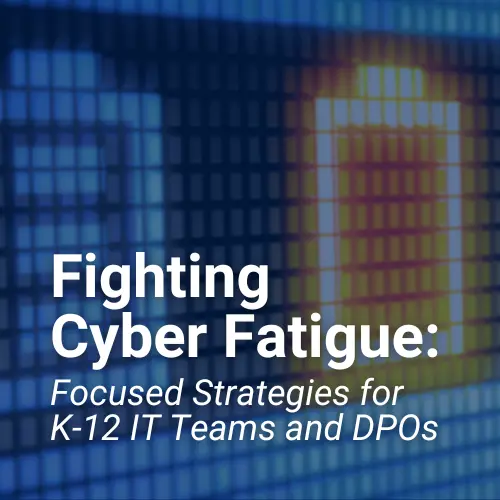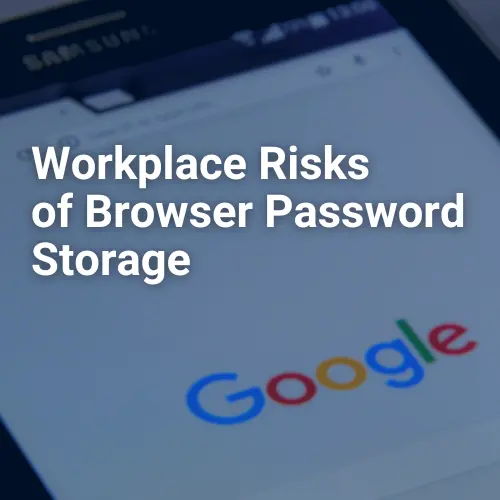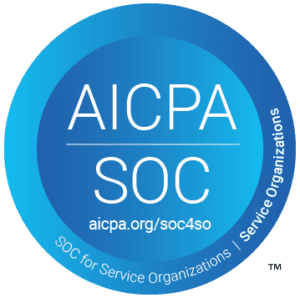In today’s fast-paced digital environment, regulatory bodies are continuously raising the bar for data privacy practices. A prime example is the recent amendment of the FTC’s Safeguards Rule, which has set a higher standard for businesses that handle sensitive financial data. The deadline for compliance has come and gone, making it crucial for organizations that have not yet met these standards to take immediate action.
This article will explain the background, key objectives, and essential requirements of the FTC Safeguards Rule and offer practical advice on how to bring your organization into compliance quickly. By the end of this guide, you’ll have a solid understanding of how to protect your customer information and why it’s worth investing the necessary time and resources to get it right.
Understanding the FTC Safeguards Rule
Background and Rationale
To understand where we are today, let’s take a quick look back. The FTC’s Safeguards Rule is a key component of the Gramm-Leach-Bliley Act (GLBA), which dates back to 1999. The rule was established to ensure that financial institutions were taking appropriate steps to protect customer information.
Fast forward to today, and the FTC has made significant updates to the rule to address the increasingly sophisticated threats we now face. The most recent update, finalized in October 2021, introduced more stringent requirements for covered entities. The Commission didn’t make these updates arbitrarily; they’re a direct response to the growing intelligence and persistence of cybercriminals. The deadline for complying with these new requirements was extended to June 9, 2023, to give organizations more time to adapt. Now that this date has passed, the urgency to comply is greater than ever.
Key Objectives of the Rule
What is the FTC Safeguards Rule really trying to achieve? At its core, the rule has three primary objectives:
- Protect Consumer Information: The top priority is ensuring that the financial information you handle is secure from unauthorized access.
- Establish a Strong Security Posture: The rule encourages a proactive approach to cybersecurity, where you’re not just reacting to threats but anticipating them.
- Enhance Accountability: The rule emphasizes the importance of having a designated person responsible for security, ensuring there’s clear oversight and regular reporting.
Who is Subject to the FTC Safeguards Rule?
Definition of Financial Institutions
Let’s clarify who needs to pay close attention to this rule. Under the GLBA, a “financial institution” is defined broadly. It’s not just banks and credit unions; if your business is involved in financial activities, there’s a strong chance you’re covered.
The scope of “financial activities” could mean anything from lending money, processing payments, advising on investments, or managing financial data. If you handle sensitive financial information in any of these activities, this rule likely applies to you.
Industries and Entities Covered
Here’s a quick look at who falls under this rule:
- Traditional Financial Services: This includes banks, credit unions, and savings and loan associations.
- Non-Bank Financial Services: Mortgage brokers, payday lenders, and investment advisors are all included. If you’re helping people manage their money, you’re on the list.
- Professional Services: Tax preparers, accountants, and debt collectors deal with financial data and need to comply.
- Retail and E-Commerce: Even car dealerships, real estate agencies, and online payment processors are subject to this rule.
- Other Entities: Insurance companies, data processors, and career counselors also fall under the rule. If your business involves financial transactions, compliance is likely necessary.
Key Requirements of the FTC Safeguards Rule
Designation of a Qualified Individual
One of the first steps toward compliance is designating a qualified individual to oversee your information security program. This person, often a Chief Information Security Officer (CISO) or someone with similar expertise, will be responsible for developing, implementing, and maintaining your security plan. In essence, this individual ensures that your security program is running smoothly and remains compliant.
Development of a Written Information Security Program
Next, you’ll need to create a written information security program. You should tailor your program to the size and complexity of your business and the nature of your activities. Think of it as your playbook for protecting customer information. It should cover everything from how you assess risks to how you respond to security incidents. And keep in mind this isn’t a set-it-and-forget-it document—it should evolve as your business grows and as new threats emerge.
Risk Assessment and Management
Conducting regular risk assessments is crucial because they help you identify where your organization is most vulnerable. Once you understand the risks, you can prioritize them and implement controls to mitigate them. These controls might include technical measures like firewalls and encryption, as well as administrative controls like access management policies. The key is to make this an ongoing process so that you’re always a step ahead of potential threats.
Access Controls and Encryption
The rule about access controls is clear: only authorized individuals should have access to customer information. This requirement means implementing role-based access controls (RBAC), which limit access based on job function, and multi-factor authentication (MFA), which adds an extra layer of security. Additionally, you’re required to encrypt sensitive customer information both during transmission and storage.
Security Awareness Training
Security isn’t just the responsibility of your IT team—it’s something everyone in your organization needs to be aware of. That’s why the rule mandates regular security awareness training. This training should help employees recognize and respond to potential threats, like phishing attacks or social engineering tactics. It should also emphasize the importance of following security protocols and the consequences of not doing so. Keeping everyone informed is essential for maintaining a strong security posture.
Monitoring and Testing
You can’t just set up your security controls and hope for the best—you need to monitor and test them to ensure they’re working continuously. This requirement involves implementing systems that detect unauthorized access, abnormal activity, and signs of compromise. Regular penetration testing and vulnerability assessments are also essential, as they help you identify and fix weaknesses before bad actors can exploit them.
Incident Response Planning
Even with the best security measures in place, there’s always a chance something could go wrong. That’s why having an incident response plan is crucial. This plan should include procedures for identifying a breach, containing the damage, notifying affected individuals, and recovering from the incident. It’s also a good idea to run regular drills, known as tabletop exercises, to ensure everyone knows their role in the event of an actual security incident.
Oversight of Service Providers
If you work with third-party service providers, it’s your responsibility to ensure they’re also following good security practices. This oversight involves conducting due diligence when selecting vendors, including specific security requirements in your contracts, and performing regular audits to verify their compliance. Remember, a breach at a third-party vendor can be just as damaging as a breach at your own company, so it’s vital to maintain oversight.
Regular Reports to the Board of Directors
Finally, the rule requires that your qualified individual provides regular reports on the effectiveness of your security program to your board of directors or governing body. This reporting is about accountability—ensuring that your top leadership is aware of your organization’s security posture and that there’s a clear line of responsibility. These reports should cover everything from risk assessments to security incidents and the overall effectiveness of your controls.
Addressing the Compliance Gap: Why So Many Organizations Are Still Not Meeting the FTC Safeguards Rule
Even though the deadline has already passed, a surprising number of organizations aren’t yet compliant with the FTC Safeguards Rule. If you’re in that boat, you’re definitely not alone. But the big question is: why are so many businesses still lagging behind?
Lack of Awareness
For many organizations, especially smaller ones, the rule might not have been on their radar. They’re busy with day-to-day operations and may not have the resources or dedicated personnel to stay on top of regulatory changes.
Complexity of the Requirements
Let’s face it—compliance can feel overwhelming. The rule isn’t just about checking a few boxes; it requires a comprehensive approach to data security. For organizations without a robust IT or cybersecurity team, tackling these requirements can seem like an uphill battle.
Issue of Prioritization
Many companies are focused on growth and customer satisfaction, which is essential, but it can sometimes mean that security takes a back seat—at least until a breach happens. However, with the average cost of a data breach now estimated at $4.88 million, according to the 2024 Cost of a Data Breach Report, the risk of not being compliant far outweighs the cost of achieving compliance.
Pace of Change in Cybersecurity
New threats emerge every day, and what was considered a best practice a year ago might not cut it today. Organizations that haven’t kept up with these changes can find themselves out of compliance before they even realize it.
Steps to Achieving Compliance
Step 1: Conduct a Gap Analysis
The first step is to determine your current status. A gap analysis will help you identify areas where you’re already compliant and where you need to make improvements. This process involves reviewing your existing policies and procedures, conducting a risk assessment, and evaluating your technical controls. The goal is to create a roadmap that outlines the specific steps you need to take to achieve full compliance.
Step 2: Designate a Qualified Individual
If you haven’t already, now is the time to designate a qualified individual to oversee your information security program. This person should have the necessary expertise and authority to implement your security measures and ensure ongoing compliance. If you don’t have someone in-house with the right qualifications, consider hiring an outside expert or consulting firm to fill this role.
Step 3: Develop and Document Your Information Security Program
Once you have a clear understanding of your gaps, it’s time to develop and document your information security program. This program should address all the key requirements of the FTC Safeguards Rule, including risk assessment, access controls, encryption, and incident response planning. Remember, this is a living document that you should review regularly and update as your organization and the threat landscape evolve.
Step 4: Implement Technical and Administrative Controls
With your security program in place, it’s time to implement the necessary technical and administrative controls. The goal is to create a layered defense that protects your customer information from unauthorized access and ensures compliance with the rule.
Step 5: Monitor and Test Your Security Controls
Once your controls are in place, you need to monitor and test them regularly to ensure they’re effective. This process includes conducting regular penetration testing and vulnerability assessments, as well as reviewing your access controls and incident response procedures. The goal is to identify and fix any weaknesses before bad actors can exploit them.
Step 6: Review and Update Your Program Regularly
Finally, compliance is not a one-time effort. To stay compliant, you need to review and update your information security program regularly. This process involves staying informed about changes to the FTC Safeguards Rule and the broader cybersecurity landscape, as well as conducting regular risk assessments and security audits.
Become Compliant with the FTC Safeguards Rule
If you’ve found yourself behind the curve, don’t worry. It’s never too late to take control of your compliance journey. Start by assessing your current security posture, developing a robust security plan, and investing in team training. And if the process feels overwhelming, consider reaching out for expert guidance. There are professionals out there who can help you navigate the complexities and set you up for success.
We’re here to assist you every step of the way. Reach out to us to discuss how we can help you achieve compliance and implement the right security controls to protect your business. Let’s turn those compliance challenges into opportunities for growth and security.



